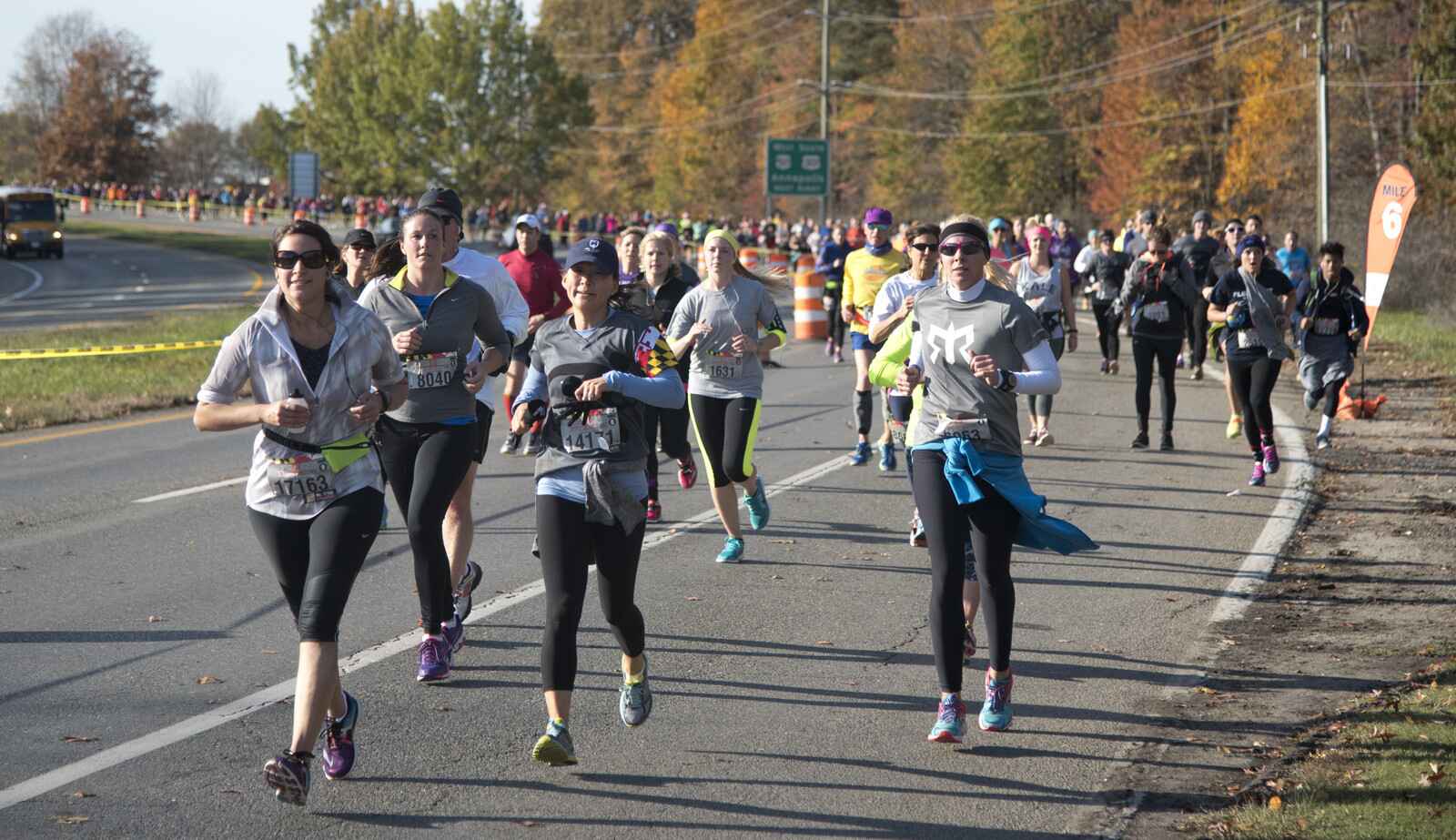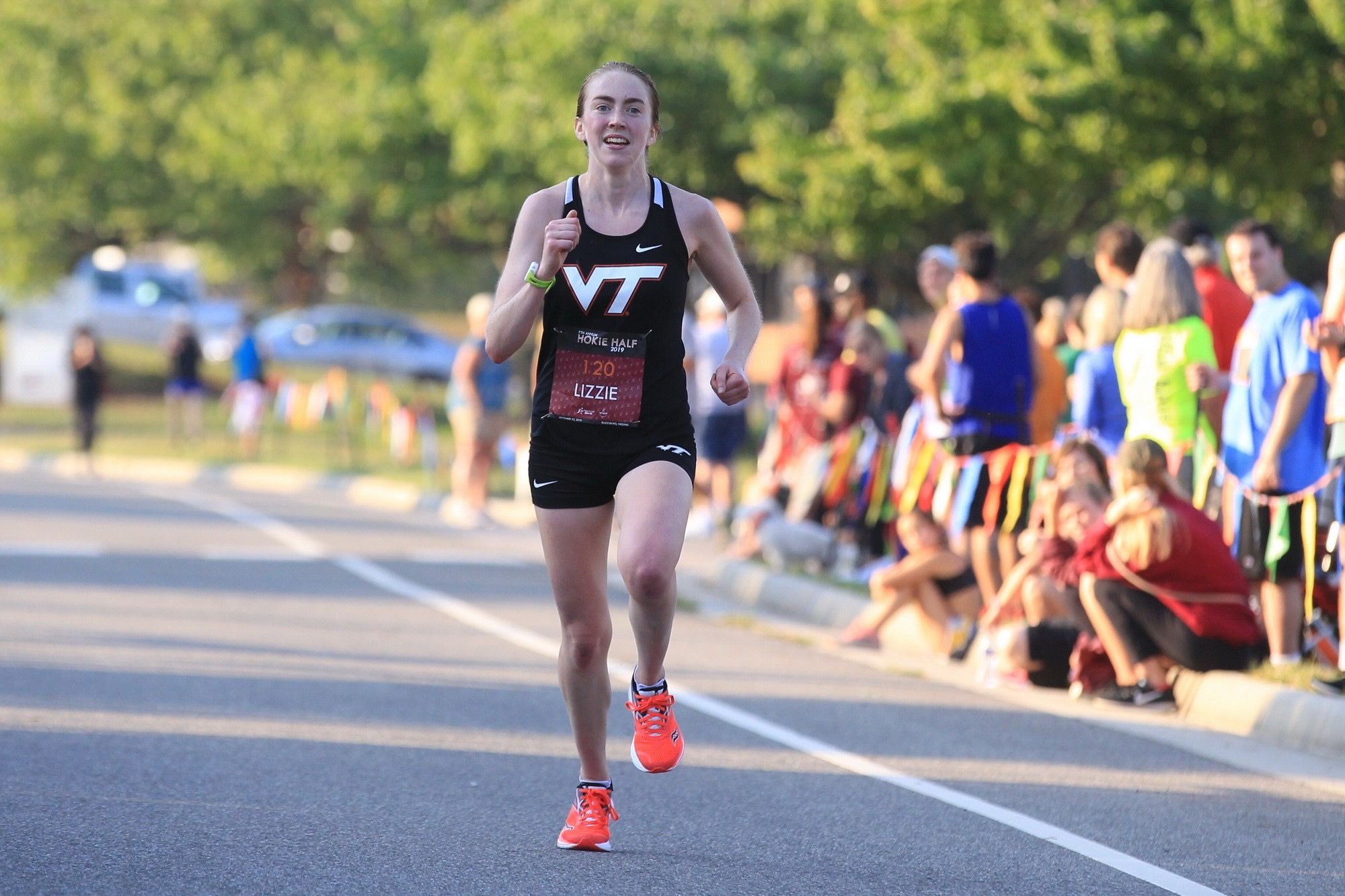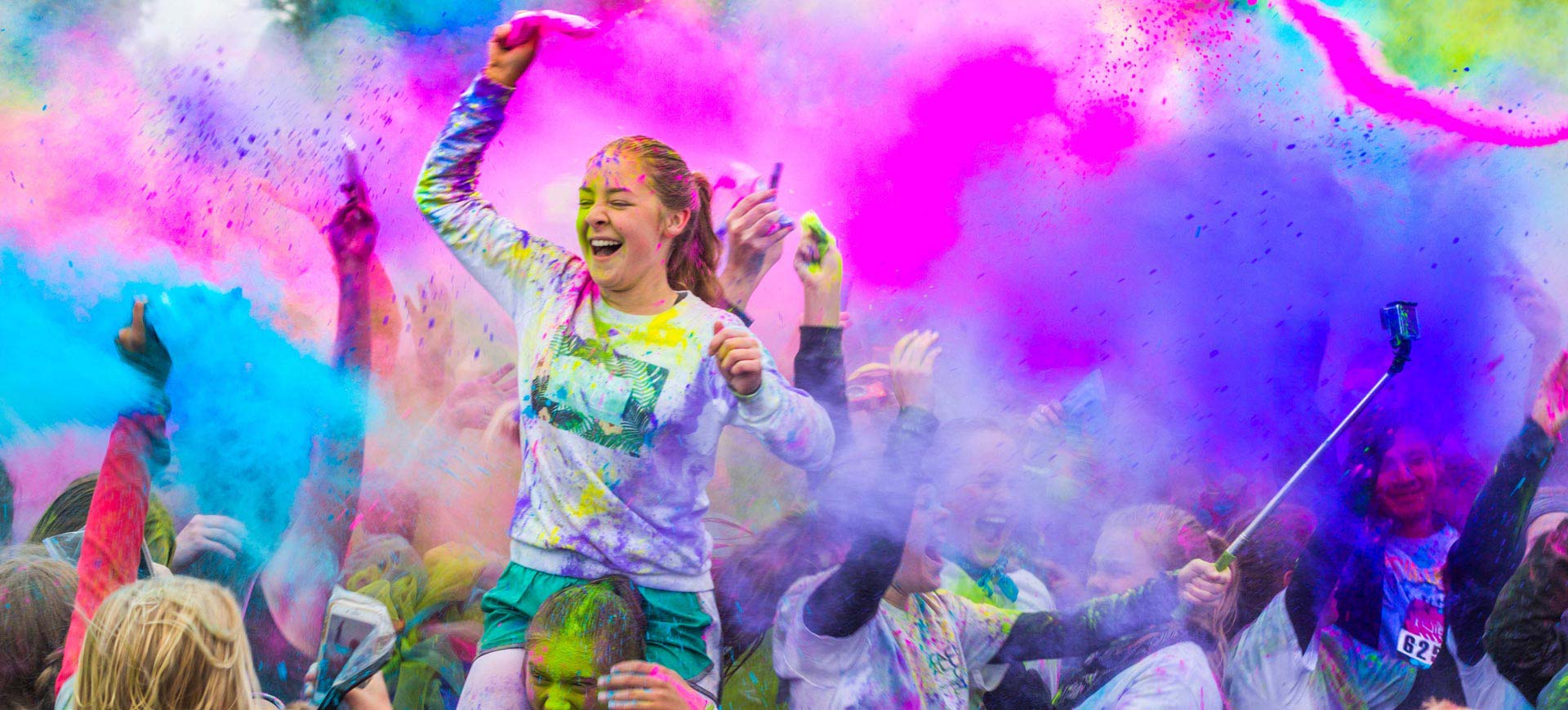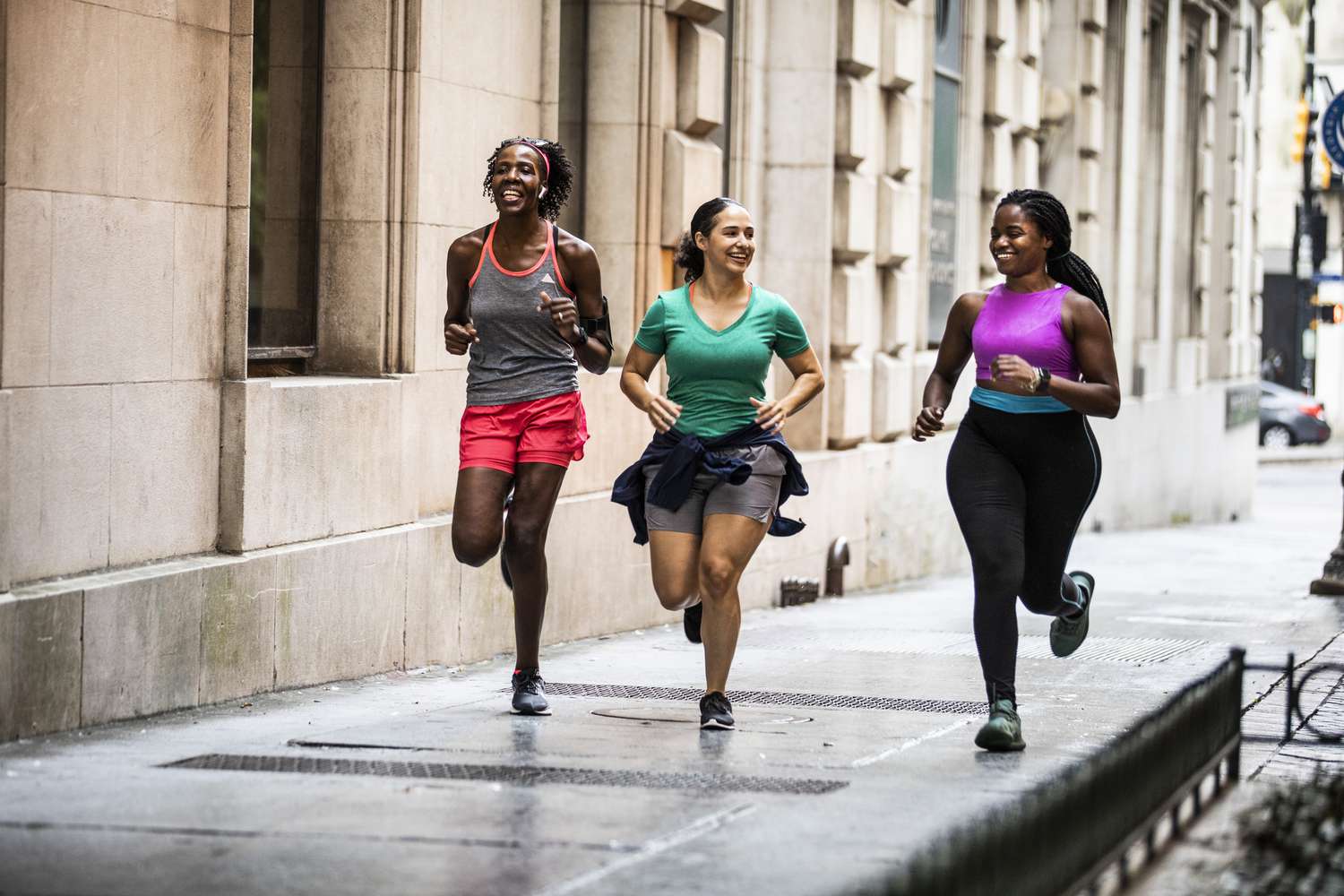

Featured
How To Market A 5K Run
Modified: October 24, 2023
Looking to market your featured 5K run? Learn effective strategies on how to gain publicity and attract participants to make your event a success.
Introduction
Organizing a 5K run can be an exciting and rewarding endeavor. Whether it’s for a charitable cause, promoting a healthy lifestyle, or simply bringing the community together, a well-executed 5K run can leave a lasting impact. However, to ensure a successful event, it is crucial to have a comprehensive marketing strategy in place. A strategic and effective marketing plan will not only help attract participants but also generate excitement and engagement around the event.
Marketing a 5K run requires a unique approach that resonates with the target audience and maximizes visibility to drive registrations and support. In this article, we will explore various strategies and tactics to help you market your 5K run successfully. From understanding your target audience to leveraging social media, building partnerships, and implementing email marketing campaigns, we will cover all aspects of creating an impactful marketing plan.
To start, it is important to understand your target audience. Who are the individuals you are trying to attract to your 5K run? Are they fitness enthusiasts, charity supporters, or families looking for a fun outdoor activity? By determining the demographics, interests, and motivations of your audience, you can tailor your marketing efforts to appeal to their specific needs and desires.
Once you have a clear understanding of your target audience, it is essential to set clear goals and objectives for your marketing campaign. Do you want to reach a certain number of registrations? Raise a specific amount of funds for a cause? Increase brand awareness for your organization? Clearly defining your objectives will help you measure the success of your marketing efforts and guide your strategy throughout the campaign.
In the following sections, we will delve into specific marketing techniques to help you promote your 5K run effectively. From leveraging social media platforms to building partnerships and sponsorships, we will provide actionable tips and insights to set you on the path to a successful event. So, let’s dive in and discover how to market your 5K run and make it a memorable experience for both participants and organizers.
Understanding the Target Audience
Before embarking on any marketing efforts for your 5K run, it is crucial to have a deep understanding of your target audience. Identifying the individuals you want to attract will allow you to tailor your messaging and promotional strategies to resonate with their specific needs and interests.
Start by conducting market research to gather demographic information about your target audience. Consider factors such as age, gender, location, and interests. For example, if your 5K run is aimed at promoting a healthy lifestyle, you may find that your target audience consists of fitness enthusiasts, young adults, and families with an interest in exercise and wellness.
In addition to demographic information, it’s important to understand the motivations and goals of your target audience. Are they looking for a fun and social event? Do they have a personal connection to the cause your 5K run is supporting? By understanding their motivations, you can craft compelling messaging that highlights the benefits of participating in your event.
One effective way to gain insights into your target audience is through surveys or focus groups. Ask questions that allow participants to share their preferences, expectations, and any barriers that may prevent them from participating. This information will help you develop marketing strategies that address potential concerns and emphasize the aspects that are most important to your target audience.
Once you have a comprehensive understanding of your target audience, you can begin to develop marketing messages that resonate with them. Use language and imagery that aligns with their interests and aspirations. For example, if your target audience is primarily families, emphasize the family-friendly atmosphere and the opportunity for parents to bond with their children while participating in a healthy activity.
Furthermore, consider the most effective channels to reach and engage your target audience. Are they active on social media? Do they read local newspapers or listen to specific radio stations? By identifying the most relevant channels, you can allocate your marketing resources more effectively and ensure your messaging reaches the right people.
Understanding your target audience is the foundation of a successful marketing campaign for your 5K run. By tailoring your messaging, imagery, and promotional strategies to resonate with their needs and desires, you will increase the likelihood of attracting a highly engaged and enthusiastic participant base.
Setting Clear Goals and Objectives
When it comes to marketing your 5K run, setting clear goals and objectives is essential for driving success. These goals will guide your marketing efforts and help you measure the effectiveness of your strategies. By defining specific and measurable objectives, you can create a focused and results-driven campaign.
Start by considering the purpose of your 5K run. Are you looking to raise funds for a charitable cause, promote a healthy lifestyle, or build community engagement? Once you have determined your primary objective, you can set measurable goals that align with it. For example, if your goal is to raise funds, you might aim to secure a specific amount in donations or attract a certain number of individual donors.
Additionally, think about the number of participants you want to attract to your 5K run. Setting a target registration number will give you a benchmark to strive towards and allow you to gauge the success of your marketing efforts. Be realistic in your goals, considering factors such as your available resources, the size of your target audience, and any competing events or activities.
When setting your goals, it’s essential to make them SMART – Specific, Measurable, Achievable, Relevant, and Time-bound. Rather than a vague goal like “increase registration numbers,” a SMART goal would be “increase registrations by 20% compared to last year by the end of the marketing campaign.” This specific and measurable goal gives you a clear target to strive for and allows you to track your progress over time.
Having clear goals and objectives not only helps you stay focused but also enables you to allocate your resources effectively. By knowing where you want to focus your efforts, you can prioritize activities that align with your objectives. This can include investing in targeted advertising, creating engaging and informative event materials, or engaging with key influencers in your community.
Regularly track and evaluate your progress towards your goals throughout the marketing campaign. This will allow you to make adjustments and optimize your strategies to ensure you are on track to meet your objectives. If you find that certain tactics are not yielding the desired results, be open to pivoting and trying alternative approaches.
In summary, setting clear goals and objectives is crucial for a successful 5K run marketing campaign. By defining specific, measurable, achievable, relevant, and time-bound goals, you can focus your efforts, track your progress, and make data-driven decisions to maximize the impact of your marketing strategies.
Creating an Effective Marketing Plan
An effective marketing plan is the roadmap to success for promoting your 5K run. It provides a systematic approach to reaching your target audience, generating awareness, and driving registrations. By creating a well-thought-out marketing plan, you can ensure that your efforts are strategic, cohesive, and impactful.
Start by identifying the key marketing channels and tactics that will help you achieve your goals. This can include online platforms such as social media, email marketing, and your organization’s website, as well as offline methods like print materials, local media, and community outreach. Consider the preferences and habits of your target audience to determine the most effective channels to reach and engage them.
Next, develop a timeline for your marketing campaign. Determine when to launch specific tactics and how long they will run. This will help you maintain a consistent presence and create a sense of anticipation leading up to the event. Be sure to allocate enough time for each tactic to gain traction and generate results.
A crucial element of a successful marketing plan is crafting compelling messaging. Develop a unique selling proposition (USP) that highlights the benefits and unique aspects of your 5K run. Focus on what sets your event apart and why participants should choose to support it. Use persuasive language, captivating visuals, and emotional appeals to convey the value and impact of participating in your 5K run.
Integrate your messaging across all marketing channels to create a cohesive brand experience. Consistency will build recognition and reinforce your key messages. For example, use the same visuals, colors, and taglines in your social media posts, email campaigns, and event materials. This will create a unified and professional image for your 5K run.
In addition to consistent messaging, consider incorporating various promotional tactics to create excitement and engagement. Run contests or giveaways on social media, offer early-bird registration discounts, or partner with local businesses to provide incentives for participants. These tactics can encourage participants to spread the word and increase the reach of your marketing campaign.
Monitor the success of your marketing plan by tracking and analyzing key performance indicators (KPIs), such as website traffic, social media engagement, email open rates, and registration numbers. Regularly review these metrics and make adjustments as needed to optimize your marketing strategies.
In summary, creating an effective marketing plan is vital for promoting your 5K run successfully. By identifying key marketing channels, developing a timeline, crafting compelling messaging, and integrating promotional tactics, you can maximize the impact of your marketing efforts and achieve your goals. Regularly monitor and adjust your strategies based on data and insights to ensure a successful campaign.
Utilizing Social Media Platforms
When it comes to promoting your 5K run, social media platforms are powerful tools that can help you reach a wide audience, engage with participants, and generate buzz around your event. With billions of active users, platforms like Facebook, Instagram, Twitter, and LinkedIn offer an opportunity to connect with your target audience on a personal and interactive level.
Start by creating dedicated social media accounts for your 5K run. This will allow you to maintain a focused presence and build a community around your event. Use consistent branding elements, such as your event logo and colors, to create a recognizable and professional image across all platforms.
Identify the social media platforms that are most popular among your target audience. If your event targets a younger demographic, platforms like Instagram and TikTok may be ideal. If your audience is more professional and business-oriented, focus on LinkedIn and Twitter. Tailor your content and approach to each platform to ensure maximum engagement.
Share engaging and visually appealing content on your social media platforms. Include relevant information about your 5K run, such as the date, location, and registration details. Use eye-catching images and videos that showcase the excitement and energy of previous events or the cause your run supports. Encourage participants to share their own experiences or training tips using event hashtags.
Engage with your audience by responding to comments, messages, and mentions on social media. Promptly address any inquiries, concerns, or feedback to build trust and establish a positive online reputation. Encourage participants to share your event with their networks by offering incentives, such as exclusive discounts or early access to registration.
Consider utilizing paid advertising on social media platforms to expand your reach and target specific demographics. Platforms like Facebook and Instagram offer robust ad targeting options that allow you to fine-tune your campaign and reach the most relevant audience. Experiment with different ad formats, such as sponsored posts, carousel ads, or video ads, to increase visibility and engagement.
Collaborate with social media influencers or local bloggers who align with your event’s values and target audience. These influencers can help you amplify your message and reach a broader audience. Engage them in promotional activities, such as hosting giveaways or participating in event-related challenges, to generate excitement and increase brand awareness.
Regularly track your social media analytics to understand what content resonates with your audience and adjust your strategy accordingly. Pay attention to metrics such as reach, engagement, click-through rates, and conversion rates. Use the insights gained to refine your content and optimize your social media campaigns.
In summary, utilizing social media platforms is an effective way to promote your 5K run. By creating a focused presence, sharing engaging content, interacting with your audience, leveraging paid advertising, collaborating with influencers, and analyzing performance metrics, you can maximize your reach, generate excitement, and drive registrations for your event.
Building Partnerships and Sponsorships
Building partnerships and securing sponsorships for your 5K run can greatly enhance your event’s success by providing additional resources, increasing exposure, and adding credibility to your event. Collaborating with businesses, organizations, and community stakeholders can help you reach a larger audience and foster a sense of community support.
Start by identifying potential partners and sponsors that align with the values and objectives of your 5K run. Consider local businesses, fitness clubs, health organizations, and companies that have a vested interest in supporting community initiatives or promoting a healthy lifestyle. Look for companies that share a similar target audience and can provide value to your event.
Reach out to potential partners and sponsors with a clear value proposition. Explain how their involvement can benefit both parties and emphasize the alignment between their brand and your event. Highlight the promotional opportunities they will receive, such as logo placement on event materials, mentions in press releases, or the chance to engage directly with participants.
Consider offering different sponsorship tiers or packages to cater to the varying budgets and objectives of potential sponsors. This can include options such as title sponsorship, category sponsorship, or in-kind partnerships. Provide a detailed breakdown of the benefits and exposure they will receive at each level of sponsorship.
Explore opportunities for co-marketing initiatives with sponsors and partners. This can involve cross-promoting their products or services in your marketing materials or collaborating on promotional events or giveaways. By working together, you can leverage each other’s audiences and maximize the reach of your marketing efforts.
Engage sponsors and partners in the planning and execution of your 5K run. Give them an active role in the event, such as hosting a booth, sponsoring a water station, or providing branded merchandise. This not only enhances the participant experience but also strengthens the ties between your event and the sponsors.
Recognize and show appreciation for your partners and sponsors. Publicly acknowledge their support on social media, event signage, and in press releases. Additionally, provide them with reports and metrics detailing the impact their sponsorship had on the event, such as the number of registrations, media exposure, or social media engagement.
Establish long-lasting relationships with your sponsors and partners by maintaining open lines of communication and seeking opportunities for future collaborations. Regularly update them on the progress and impact of your event and identify ways to continue working together beyond the 5K run.
In summary, building partnerships and securing sponsorships can greatly enhance your 5K run’s success. By identifying relevant partners and sponsors, offering value propositions, engaging them in event planning and execution, recognizing their support, and fostering long-term relationships, you can leverage their resources and expand the reach, impact, and credibility of your event.
Creating Compelling Event Materials
Creating compelling event materials is essential for capturing the attention of your target audience, effectively communicating the details of your 5K run, and generating excitement and interest in your event. From eye-catching flyers to informative brochures, the quality and design of your event materials can leave a lasting impression on potential participants.
Start by developing a cohesive visual identity for your event. This includes designing a logo, selecting colors that align with your branding, and choosing fonts that convey the tone and personality of your 5K run. Consistency in design elements across all event materials will help create a recognizable and professional image.
Design high-quality and visually appealing flyers to distribute at local businesses, fitness centers, community centers, and other relevant locations. Include captivating images that showcase the energy and excitement of past events, along with key information such as the date, location, registration details, and any unique aspects that make your 5K run stand out.
Create digital assets, such as banners and graphics, for use on your event website, social media platforms, and email newsletters. These assets should visually reflect the brand identity of your event and include important information to drive registrations, such as a clear call-to-action and links to registration forms.
Provide informative brochures or booklets that participants can take home or access digitally. Include details about the course, event schedule, safety measures, and any additional activities or attractions. This will help participants feel informed and prepared for the event, increasing their engagement and anticipation.
Consider creating promotional videos to showcase the excitement and energy of your 5K run. Highlight testimonials from past participants, footage from previous events, and interviews with key organizers or sponsors. Share these videos on your website and social media channels to give potential participants a glimpse of what they can expect.
Design unique event t-shirts, medals, or other branded merchandise that participants can look forward to receiving. This not only acts as a form of recognition but also serves as a tangible reminder of their participation in your 5K run. Ensure the design incorporates the event logo, date, and key messaging.
Incorporate QR codes or short links on your event materials to make it easy for potential participants to access additional information or navigate directly to the registration page. By simplifying the registration process, you remove barriers and increase the chances of conversion.
Regularly review and update your event materials to ensure they are current, accurate, and aligned with any changes in the event details. This includes updating dates, modifying routes, and adding any new attractions or activities.
In summary, creating compelling event materials is crucial for effectively promoting your 5K run. By developing a cohesive visual identity, designing high-quality flyers and digital assets, providing informative brochures, creating engaging videos, designing branded merchandise, and simplifying the registration process, you will generate excitement, capture attention, and convey key information to attract participants to your event.
Implementing Email Marketing Campaigns
Email marketing campaigns are a powerful tool for promoting your 5K run, reaching a targeted audience, and maintaining ongoing communication with potential participants. An effective email marketing strategy can help you build excitement, drive registrations, and keep participants informed leading up to the event.
Start by building an email list of individuals who have shown interest in your event. This can include past participants, individuals who have inquired about your event, or those who have signed up for updates through your website or social media platforms. Ensure that you have their consent to receive emails from you to comply with email marketing regulations.
Segment your email list based on different criteria, such as demographics, interests, or engagement level. This allows you to create targeted and personalized email content that resonates with each segment. For example, you can send specific invitations or promotions to participants who have previously attended your event or focus on highlighting the charitable aspect for those interested in supporting the cause.
Create a captivating and engaging email template that reflects your 5K run’s branding. Use a mix of compelling images, concise and engaging copy, and clear calls-to-action to drive recipients to take the desired action, such as registering for the event or sharing the email with their network.
Send a series of emails leading up to the event to build anticipation and keep participants informed. This can include reminders about registration deadlines, updates on event details, training tips, success stories from previous participants, or exclusive offers or discounts. Be mindful of frequency, ensuring that you are providing value without overwhelming recipients with too many emails.
Use email automation to streamline your communication and ensure timely delivery. Set up automated emails to welcome new subscribers, confirm registrations, send post-event surveys, or thank participants for their support. This allows you to provide consistent and personalized communication without requiring constant manual effort.
Include social sharing buttons in your emails to encourage recipients to share your event with their networks. This can help extend your reach and generate word-of-mouth promotion. Consider offering incentives, such as referral discounts or special giveaways, to participants who successfully refer others to register.
Regularly evaluate the performance of your email campaigns through analytics. Track open rates, click-through rates, and conversion rates to understand what content resonates with your audience and optimize future email campaigns. Experiment with different subject lines, content formats, and calls-to-action to identify what drives the most engagement and conversions.
Lastly, always ensure that your emails are mobile-friendly. A significant portion of email recipients access their emails via mobile devices, so having responsive design and formatting ensures a positive user experience and increases the likelihood of recipients taking action.
In summary, implementing email marketing campaigns is a powerful strategy for promoting your 5K run. By building an email list, segmenting your audience, creating compelling emails, sending a series of targeted messages, utilizing automation, encouraging social sharing, analyzing performance, and optimizing for mobile, you can effectively engage with potential participants and drive registrations for your event.
Leveraging Local Media Channels
Leveraging local media channels is a valuable strategy for promoting your 5K run and generating awareness within the community. Local media outlets such as newspapers, television stations, radio stations, and online publications can reach a wide audience and provide valuable coverage for your event.
Start by creating a press release that highlights the key details of your 5K run, including the purpose, date, location, and any unique aspects or special guests. Craft a compelling and newsworthy story that grabs the attention of local media outlets. Include quotes from event organizers, testimonials from previous participants, and any noteworthy statistics or achievements from past events.
Research the local media outlets in your area and compile a list of relevant contacts, including reporters, journalists, and editors who cover community events, health and wellness, or sports. Personalize your outreach by addressing recipients by name and tailoring your message to their specific interests or beats.
Send your press release and a personalized pitch email to the media contacts on your list. Clearly explain why your event is newsworthy and the impact it will have on the community. Highlight any unique or compelling angles that would pique their interest, such as human-interest stories or community involvement. Include high-resolution images or videos that can accompany the story if they choose to cover it.
Follow up with the media outlets a few days after sending the initial pitch to gauge their interest and offer any additional information or resources they may need. Building relationships with media professionals can increase the likelihood of coverage and future collaborations.
In addition to traditional media channels, consider reaching out to local bloggers or influencers who have a strong presence in your community. They can help spread the word about your event to their followers and provide an authentic and engaging perspective on your 5K run.
Offer media partners exclusive access or benefits, such as early access to event information or interviews with key organizers or participants. This can incentivize media outlets to cover your event and provide valuable exposure leading up to the 5K run.
Invite media representatives to attend your event as press or provide them with press passes. This allows them to experience the event firsthand and capture compelling visuals and stories. Be available to provide any necessary information or interviews on-site, and consider offering post-event interviews or follow-up stories to extend the coverage.
Monitor media coverage of your event and share any published articles or segments on your social media channels and website. This not only showcases the success and impact of your event but also acts as social proof and boosts credibility.
In summary, leveraging local media channels is an effective strategy for generating awareness and promotion for your 5K run. By creating a compelling press release, personalizing outreach, building relationships with media contacts, collaborating with local bloggers and influencers, offering exclusive access, and monitoring media coverage, you can gain valuable exposure and attract participants within your community.
Engaging with Influencers and Community Leaders
Engaging with influencers and community leaders is a powerful strategy for promoting your 5K run and gaining the support and participation of their followers. Influencers and community leaders have established trust and credibility within their respective communities, making their endorsement and participation highly impactful.
Start by identifying influencers and community leaders who align with the values, mission, and target audience of your 5K run. Look for individuals who have a strong presence on social media platforms, active community involvement, and a genuine interest in supporting local initiatives.
Reach out to these influencers and leaders with a personalized message explaining the purpose and importance of your 5K run. Highlight how their involvement can make a difference and benefit the community. Offer opportunities for collaboration, such as featuring them as special guests, speakers, or even as honorary participants.
Collaborate with influencers and community leaders to create engaging and organic content related to your 5K run. This can include sponsored posts, behind-the-scenes videos, training tips, or personal stories about their own journey towards a healthier lifestyle. Encourage them to share this content with their followers, tagging your event and using event-specific hashtags to increase visibility and reach.
Consider organizing influencer or community leader-led training sessions or meet-ups to foster a sense of community and camaraderie among participants. This not only provides value to participants but also allows the influencers or leaders to form a personal connection with attendees, further boosting their involvement and promotion of your event.
Offer incentives or exclusive benefits to influencers and community leaders who actively promote your 5K run. This can include VIP access, branded merchandise, or product samples. Show them gratitude and appreciation for their support, recognizing their efforts through social media shout-outs or public acknowledgments during the event.
Engage with influencers and community leaders beyond your 5K run by maintaining a genuine and ongoing relationship. Continue to collaborate on future events or initiatives, seek their advice, or support their own community projects. This fosters long-term partnerships and encourages them to become advocates for your organization and future events.
Monitor and track the impact of influencer and community leader partnerships by analyzing social media metrics, such as reach, engagement, and follower growth. Keep an eye on comments, messages, and conversations related to your event to understand the sentiment and make necessary adjustments for future collaborations.
In summary, engaging with influencers and community leaders can significantly boost the promotion and success of your 5K run. By identifying relevant influencers, reaching out with personalized messages, collaborating on engaging content, offering incentives, nurturing long-term relationships, and tracking the impact of partnerships, you can leverage their influence and reach to attract participants and generate excitement around your event.
Implementing a Referral Program
Implementing a referral program can be a powerful strategy to generate word-of-mouth promotion and increase participant registrations for your 5K run. By incentivizing your current participants to refer their friends, family, and colleagues, you can tap into their networks and expand your reach organically.
Start by developing a referral program that offers incentives to participants who successfully refer others to register for your 5K run. The incentives can vary, such as discounted registration fees, exclusive merchandise, or special perks on race day. Make the rewards valuable and desirable to provide motivation for participants to actively refer others.
Create clear and simple guidelines for participating in the referral program. Clearly outline the steps participants need to take to refer others and ensure that it is easy for participants to share the necessary information or referral codes. This can be through a dedicated referral link, unique discount codes, or a specific online form.
Promote the referral program to your existing participants through various channels, including email newsletters, social media posts, and event signage. Clearly communicate the benefits of participating in the program and emphasize how their referrals can make a difference in supporting the event or cause.
Encourage participants to share their referral links or codes on their social media platforms, personal blogs, or community forums. Provide them with prewritten social media posts or email templates that they can easily customize and share with their networks. This makes it easier for them to spread the word and increases the chances of successful referrals.
Regularly communicate the progress and success of the referral program to participants. This can include updates on the number of successful referrals, leaderboard rankings, or milestone achievements. This not only encourages healthy competition but also reinforces the importance and impact of referrals in helping the event succeed.
Remind participants about the referral program throughout the registration period and leading up to the event. Use email drip campaigns, social media reminders, and personalized messages to keep the program top of mind and encourage continued participation.
Implement a tracking system to accurately monitor and attribute successful referrals. This can involve automated processes or manual tracking as participants submit their referrals. Regularly update participants on the status of their referrals and ensure that incentives are distributed in a timely manner.
Consider rewarding top referrers with special recognition or additional benefits. This can include VIP access, exclusive race-day experiences, or public acknowledgment during the event. Recognizing their efforts not only incentivizes them further but also encourages others to actively participate in the referral program.
Evaluate the success of your referral program by tracking the number of registrations attributed to referrals, calculating the return on investment (ROI), and measuring participant satisfaction and engagement. Gather feedback from participants to identify areas for improvement and make adjustments for future events.
In summary, implementing a referral program is an effective strategy to leverage the networks of your current participants and generate word-of-mouth promotion for your 5K run. By developing a clear program, promoting it to participants, providing incentives, facilitating easy sharing, tracking referrals, and evaluating success, you can increase registrations and create a community of active ambassadors for your event.
Tracking and Analyzing Marketing Efforts
Tracking and analyzing your marketing efforts is crucial for evaluating the effectiveness of your strategies and making data-driven decisions to optimize your 5K run promotion. By monitoring key metrics and analyzing the results, you can identify successful tactics, make necessary adjustments, and maximize the impact of your marketing campaigns.
Start by identifying the key performance indicators (KPIs) that are most relevant to your goals. These can include metrics such as website traffic, social media engagement, email open rates, click-through rates, conversion rates, registration numbers, and revenue generated. Clearly define the benchmarks or targets you aim to achieve for each KPI.
Implement tracking tools and analytics to collect data on your marketing efforts. Use website analytics platforms, such as Google Analytics, to track website traffic, user behavior, and conversion rates. Utilize social media analytics to understand reach, engagement, and follower growth. Use email marketing platforms to track email open rates, click-through rates, and conversions. Collect data from registration systems to understand participant demographics and referral sources.
Regularly review your marketing analytics to evaluate the performance of your campaigns. Monitor trends, patterns, and changes in the data over time. Identify which marketing channels and tactics are driving the most significant results and which ones may need adjustments or additional investment.
Experiment with A/B testing to compare different marketing approaches and determine the most effective strategies. Test variables such as email subject lines, ad copy, imagery, landing page designs, or call-to-action buttons. Analyze the results of these tests to identify the highest-performing elements and incorporate them into your future campaigns.
Segment your data to gain more insights into the behavior and preferences of different groups within your audience. Analyze data based on demographics, referral sources, engagement levels, or registration conversions. This segmentation helps you understand which segments are most responsive to your marketing efforts and enables you to tailor your messaging accordingly.
Monitor the attribution of registrations and conversions to understand which marketing channels or touchpoints have the most significant impact on driving participants to register. This information helps you allocate resources, focus on the most effective channels, and adjust your marketing mix for optimal results.
Regularly communicate and collaborate with your team or stakeholders to share the insights gained from your marketing analytics. Discuss the successes, challenges, and opportunities identified to make informed decisions and align future marketing strategies with organizational goals.
Use the insights gained from tracking and analyzing your marketing efforts to make data-driven decisions. Adjust and refine your strategies based on the performance data, target audience preferences, and market trends. Continuously iterate and optimize your campaigns to achieve the best results.
In summary, tracking and analyzing your marketing efforts is essential for understanding the impact and effectiveness of your strategies. By monitoring key metrics, utilizing tracking tools, conducting A/B testing, segmenting data, monitoring attribution, sharing insights, and making data-driven decisions, you can optimize your marketing campaigns and maximize the success of your 5K run promotion.
Conclusion
Successfully marketing a 5K run requires a comprehensive and strategic approach. By implementing the strategies outlined in this article, you can maximize your event’s visibility, attract participants, and create an impactful experience for all involved.
Understanding your target audience is key to tailoring your messaging and promotional efforts. By identifying the demographics, motivations, and interests of your audience, you can create content that resonates with them and drives engagement.
Setting clear goals and objectives helps you stay focused and measure the success of your marketing efforts. SMART goals allow you to track your progress and make data-driven decisions to optimize your strategies.
Crafting compelling event materials, utilizing social media platforms effectively, building partnerships and sponsorships, implementing email marketing campaigns, leveraging local media channels, engaging with influencers and community leaders, implementing a referral program, and tracking and analyzing your marketing efforts are all crucial components of a successful marketing plan for your 5K run.
Remember, marketing is an ongoing process. It requires monitoring, evaluation, and adaptation based on insights and feedback. By continuously analyzing the performance of your marketing campaigns and making data-driven decisions, you can continually optimize and improve your strategies for future events.
With a comprehensive marketing plan in place, aligned with your goals and the preferences of your target audience, you can create significant buzz and generate excitement for your 5K run. By leveraging multiple marketing channels, engaging with stakeholders, and implementing creative and impactful strategies, you can ensure a successful and memorable event that leaves a lasting impression on participants and the community.







